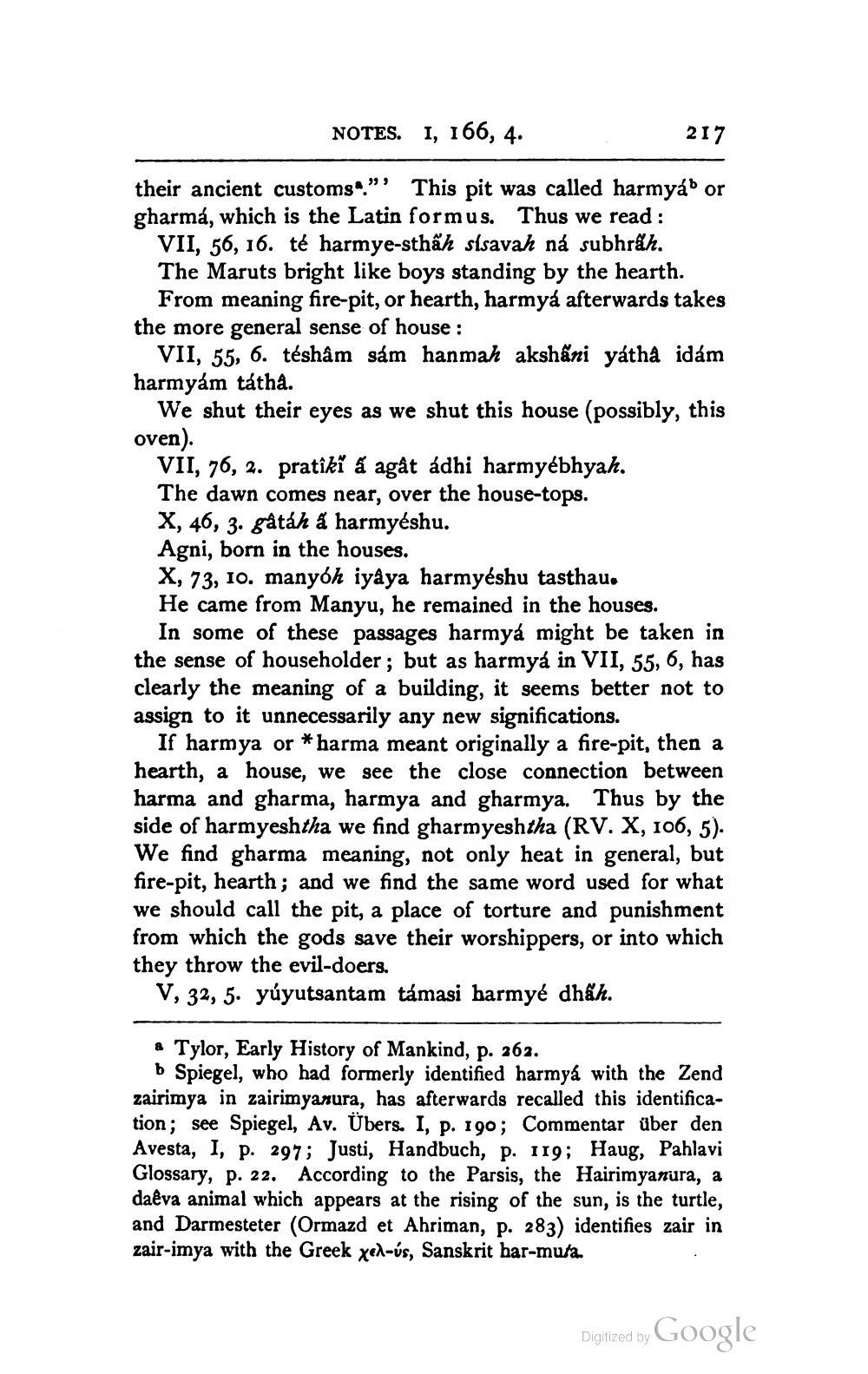________________
NOTES. I, 166, 4.
217
their ancient customs."' This pit was called harmya' or gharmá, which is the Latin formus. Thus we read :
VII, 56, 16. té harmye-sthäh sisavah na subhráh. The Maruts bright like boys standing by the hearth.
From meaning fire-pit, or hearth, harmya afterwards takes the more general sense of house :
VII, 55, 6. téshâm sám hanmah akshāni yatha idám harmyám tátha.
We shut their eyes as we shut this house (possibly, this oven).
VII, 76, 2. pratîki á agåt ádhi harmyébhyah. The dawn comes near, over the house-tops. X, 46, 3. gåtáh á harmyéshu. Agni, born in the houses. X, 73, 10. manyoh iyâya harmyéshu tasthau. He came from Manyu, he remained in the houses.
In some of these passages harmyá might be taken in the sense of householder ; but as harmya in VII, 55, 6, has clearly the meaning of a building, it seems better not to assign to it unnecessarily any new significations.
If harmya or *harma meant originally a fire-pit, then a hearth, a house, we see the close connection between harma and gharma, harmya and gharmya. Thus by the side of harmyeshtha we find gharmyeshtha (RV. X, 106, 5). We find gharma meaning, not only heat in general, but fire-pit, hearth; and we find the same word used for what we should call the pit, a place of torture and punishment from which the gods save their worshippers, or into which they throw the evil-doers.
V, 32, 5. yuyutsantam támasi barmyé dhah.
a Tylor, Early History of Mankind, p. 262.
b Spiegel, who had formerly identified harmya with the Zend zairimya in zairimyanura, has afterwards recalled this identification; see Spiegel, Av. Übers. I, p. 190; Commentar über den Avesta, I, p. 297; Justi, Handbuch, p. 119; Haug, Pahlavi Glossary, p. 22. According to the Parsis, the Hairimyanura, a daêva animal which appears at the rising of the sun, is the turtle, and Darmesteter (Ormazd et Ahriman, p. 283) identifies zair in zair-imya with the Greek xen-ús, Sanskrit har-muta.
Digitized by
Digitized by Google




